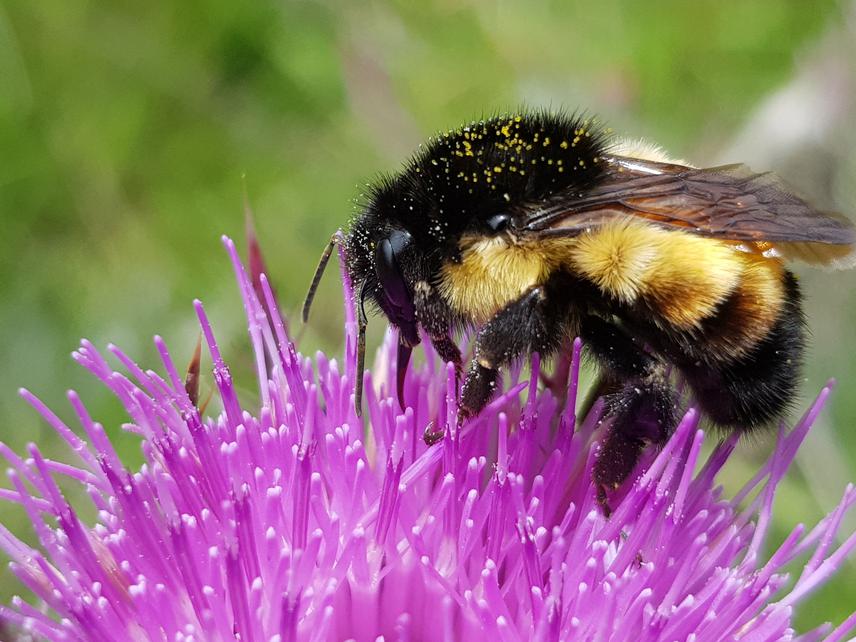Oscar Gustavo Martínez López
Recent studies documenting the decline of pollinators and bumble bees are of great concern. Conservation efforts to protect bumblebee fauna worldwide are usually based on data that is collected by researchers, and most recently volunteers. This data usually contributes to regional conservation assessments, yet at the local landscape level we do not understand how people and bumble bees interact in the agroecosystems. That is why the project will focus on the relationship of people in two indigenous communities in the Tacana region in Mexico and Guatemala regarding bumble bees.

Bombus ephippiatus queen pollinating native plant in Chiapas highlands. © Oscar Gustavo Martínez López.
The project will be carried out in the border between both countries, in two indigenous Mam communities in the Tacana volcano, which is a Biosphere reserve recognized by UNESCO, important in terms of fragile ecosystems, rich wild flora and fauna species of cultural, scientific, economic, and biological relevance. This location also has a rich bumble bee fauna that is associated with agroecosystems developed by the indigenous Mam communities which is based on maze squash and beans.
The objectives of the project are: 1) Have a basic knowledge of the natural history of bumble bees, which is important as a component for conservation at the local landscape level. 2) Understand the relationship between people and bumble bees, this will help us identify how bumble bees are perceived by the communities and what lessons we can learn from this relationship in conservation. 3) Learn which crops bumble bees visit, as a mean to understand the impact of agriculture in the maintenance of bumble bee populations.
We hope that our project helps us understand the relationship of people-bumble bees and generate natural history information of these bees. This information could help conservationists to realize how we can protect bumble bees at the landscape level. This will also be a link between local traditional knowledge and scientific knowledge that in turn can be used for conservation efforts in the Mesoamerican region and could be the basis to promote conservation efforts of these pollinators in other regions worldwide.
Header: Tacana volcano seen from Sibinal, San Marcos, Guatemala. © Oscar Gustavo Martínez López.